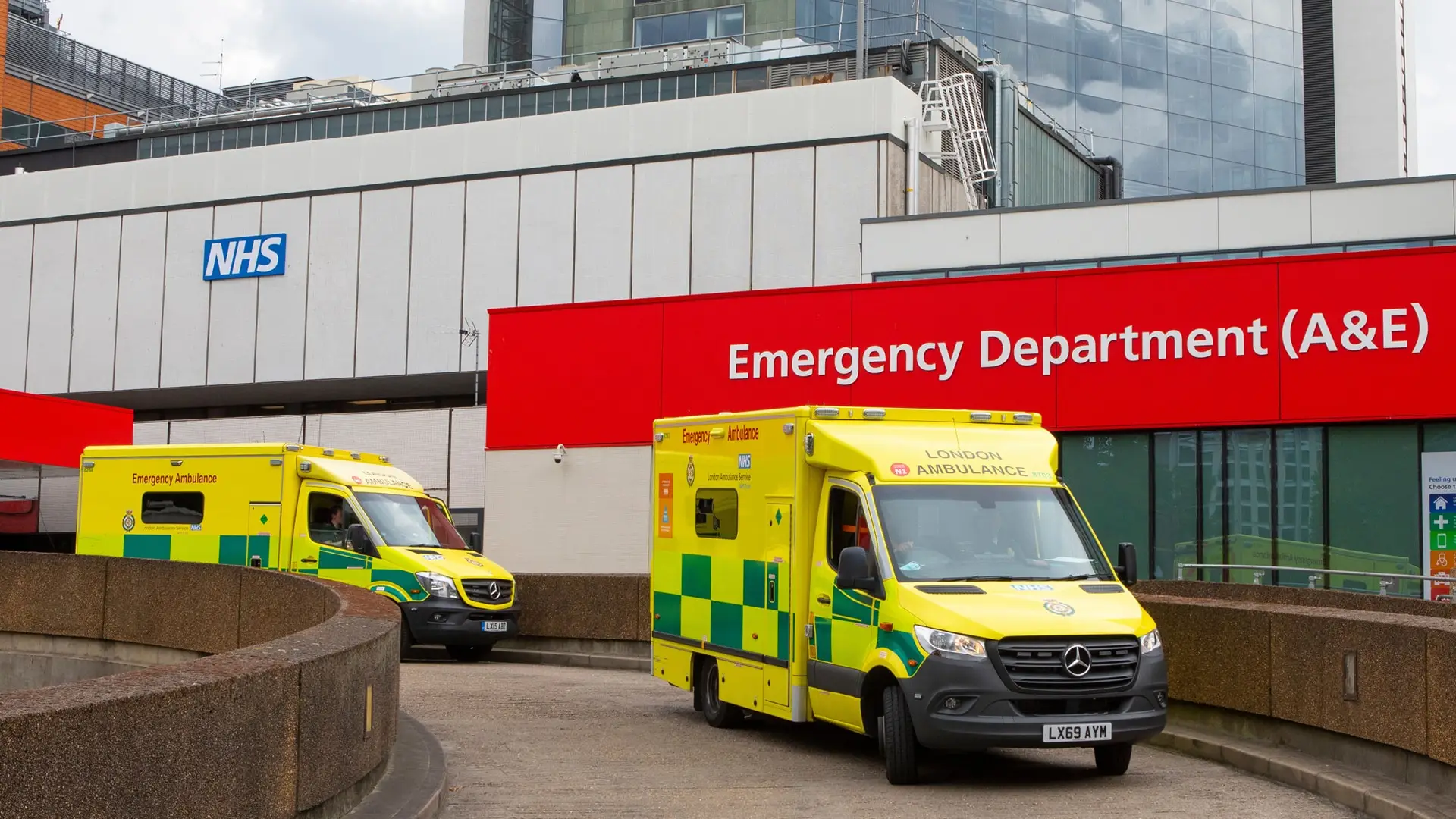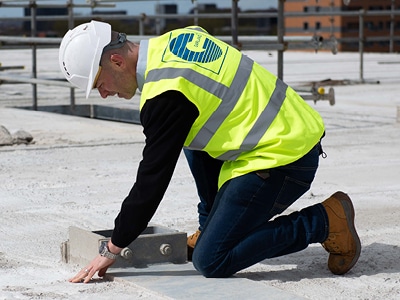

Did you know that NHS buildings account for over 15% of the organisation’s total carbon footprint? As the NHS pushes toward net zero by 2040, Garland UK Technical Manager, Matthew Hansord discusses why estate managers must rethink their approach to sustainability, ensuring their facilities meet stringent environmental targets without compromising patient care.
The NHS Net Zero commitment is one of the most ambitious sustainability strategies in the public sector, placing NHS Trusts under increasing pressure to improve estate management practices. With a significant proportion of NHS emissions stemming from buildings, it is imperative for estate managers to implement robust decarbonisation strategies that ensure compliance with sustainability targets while maintaining uninterrupted healthcare services.
Overcoming Challenges in Healthcare Estate Management
Healthcare estate teams face numerous challenges in achieving sustainability goals, including aging infrastructure, increasing regulatory compliance demands, and financial constraints when implementing energy efficiency measures. Many hospital buildings were constructed decades ago using outdated materials that do not meet modern sustainability standards.
At the same time, balancing sustainability initiatives with operational resilience is a key concern, as hospitals operate continuously and any disruption due to construction or refurbishment can have significant consequences for patient care. Decision makers must prioritise solutions that deliver long-term environmental and financial benefits while ensuring minimal interference with day-to-day operations.
The NHS Decarbonisation of Estates Framework
The NHS Decarbonisation of Estates Framework provides a structured approach to reducing carbon emissions across healthcare buildings. This £500 million initiative focuses on energy efficiency measures, renewable energy integration, and improved insulation standards to help NHS facilities transition towards a greener future.
Roofing upgrades play a crucial role in this transformation, offering a practical solution to enhance building performance, reduce energy consumption, and support long-term sustainability objectives.



High-Performance Roofing for Carbon Reduction
One of the most effective ways to support the NHS decarbonisation agenda is through high-performance roofing solutions. Traditional roofing systems often contribute to energy inefficiency, leading to excessive heating and cooling costs. By retrofitting and upgrading hospital roofs, NHS Trusts can significantly reduce energy demand, aligning with both carbon reduction and financial savings objectives.
Metal roofing is particularly effective for healthcare estates aiming to improve sustainability. Its long lifespan, durability, and recyclability make it a preferred option for NHS facilities looking for cost-effective, environmentally friendly solutions. With a lifespan of over 50 years, metal roofing reduces the need for frequent replacements and minimises material waste. Unlike traditional roofing materials, metal roofing is fully recyclable at the end of its life cycle, supporting a circular economy approach. High-quality insulation within metal roofing systems improves thermal performance, helping to maintain stable indoor temperatures and reducing energy demand. Metal roofs also provide an ideal surface for solar photovoltaic integration, maximising renewable energy generation and reducing reliance on grid electricity.
Enhancing Thermal Efficiency Through Roof Retrofitting
Improving thermal efficiency is essential for reducing energy consumption in healthcare buildings. Retrofitting existing roofs with upgraded insulation can lead to significant energy savings. A well-insulated roof minimises heat transfer, reducing the need for artificial heating and cooling.
By achieving a U-value as low as 0.15, NHS Trusts can ensure compliance with modern building regulations, including Part L of the Building Regulations, which sets energy efficiency standards for non-domestic buildings. Enhanced insulation and waterproofing also reduce the risk of leaks and structural issues, ultimately lowering long-term maintenance costs and increasing the lifespan of hospital roofs.
The Importance of Roof Condition Surveys
Understanding the current state of a roof is critical to making informed decisions about upgrades and long-term maintenance. A roof condition survey provides a detailed analysis of existing issues, potential failure points, and areas for improvement. By conducting a thorough survey, NHS Trusts can identify weaknesses such as water ingress risks, insulation deficiencies, and drainage problems before they escalate into costly repairs.
A proactive approach to roof maintenance ensures that remedial actions can be taken at the right time, preventing disruption to healthcare operations and extending the roof’s lifespan. Through expert assessments, estate managers can prioritise investments in areas that will deliver the most significant improvements in energy efficiency and long-term cost savings. Effective roof asset management also reduces emergency repairs and downtime, ensuring that hospitals remain operational without unexpected closures due to structural failures.



Solar PV Integration for Sustainable Energy
Solar photovoltaic technology is rapidly becoming a key component of NHS sustainability strategies, with many healthcare estates looking to harness renewable energy to offset their carbon footprint and cut operational costs. Retrofitting solar panels onto existing hospital roofs is one of the most effective ways to achieve this. Installing solar PV reduces energy costs by decreasing reliance on grid electricity, leading to long-term financial savings and returns on investment in as little as four years. Generating clean, renewable energy on-site helps hospitals lower their carbon emissions and move closer to their net zero targets. Many NHS facilities are also adopting battery storage solutions alongside solar PV, allowing them to store excess energy for use during peak demand periods. When combined with high-performance roofing materials, solar PV panels can extend the functional lifespan of hospital roofs by protecting them from environmental degradation.
Conducting a solar yield analysis is a crucial step in determining the viability of solar PV installations. This assessment considers factors such as roof orientation, shading, and energy consumption patterns to calculate potential electricity generation, ensuring that NHS estates make data-driven decisions about solar investments while maximising energy production and cost-effectiveness.
In Practice- Memorial Hospital’s Decarbonisation Scheme
A recent example of a successful NHS roofing upgrade is Garland UK’s project at Memorial Hospital, part of Oxleas NHS Foundation Trust. The hospital required a critical roof refurbishment to enhance thermal efficiency, address maintenance concerns, and align with the Trust’s Green Plan commitment. The existing roof had reached the end of its lifespan, leading to high energy costs and water ingress risks.
Garland UK implemented a StressPly Flex Plus waterproofing system, alongside a tapered insulation scheme to improve drainage and reduce heat loss. The project adhered to Safe2Torch guidelines, incorporating self-adhesive membranes in high-risk areas to enhance fire safety. The refurbishment achieved a U-value of 0.15, significantly improving thermal efficiency and reducing heating costs.
The hospital remained fully operational throughout, with minimal disruption to patients and staff, and the project was backed by Garland UK’s 25-year Single-Point Guarantee, ensuring long-term reliability and sustainability. This project demonstrated how strategic roofing upgrades can directly contribute to NHS decarbonisation goals, improving building performance while ensuring continuous patient care and safety.
Future-Proofing NHS Estates for Sustainability
As the NHS continues its journey towards net zero emissions by 2040, roofing solutions will play a pivotal role in achieving sustainability targets. Metal roofing, improved insulation, and solar photovoltaic integration offer long-term, cost-effective strategies that healthcare estates can adopt to reduce their carbon footprint and enhance energy efficiency. Understanding the current roof condition through surveys and conducting solar yield analyses ensures that estate managers make informed decisions about upgrades and investments.
For NHS Trusts looking to meet sustainability targets while maintaining financial viability, investing in expert-led roofing upgrades is a strategic move. Estate managers should consider commissioning roof surveys, integrating solar PV, and implementing high-performance insulation to future-proof their facilities for a net-zero future. By taking proactive steps to upgrade hospital roofs, healthcare estates can make significant strides towards a greener, more resilient future.
“Metal roofing, improved insulation, and solar photovoltaic integration offer long-term, cost-effective strategies that healthcare estates can adopt to reduce their carbon footprint and enhance energy efficiency.”
Matthew Hansord, Technical Manager, Garland UK
